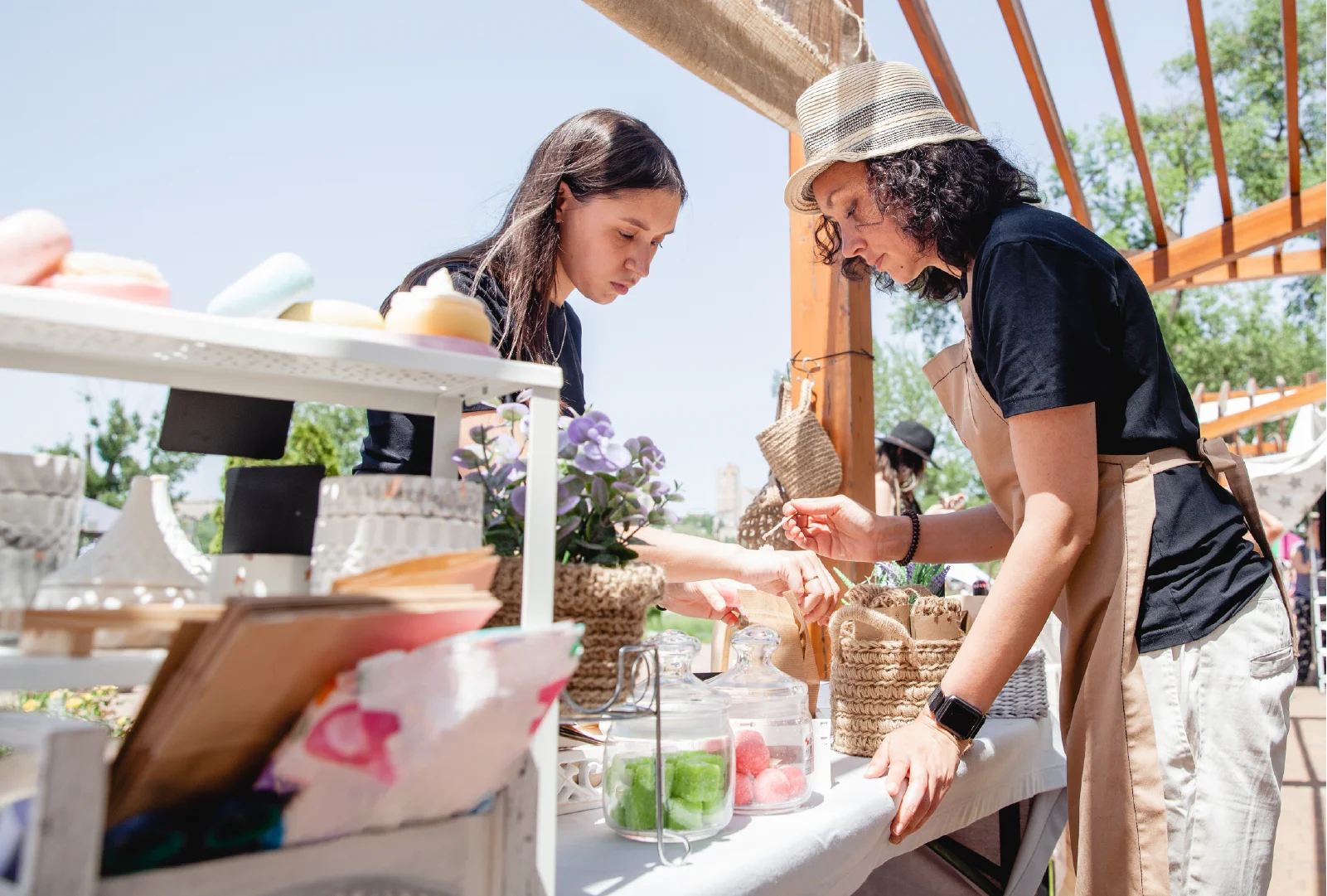Fair and festival season is the busiest time of year for many artists and crafters. When juggling your inventory, booth prep, and those all-important deadlines feels like too much, we’ve got a plan to keep you on track.
This quick guide walks you through how to prepare for festival season with insurance, booth setup tips, and expert advice, so you can confidently tackle your to-do list and focus on your sales.
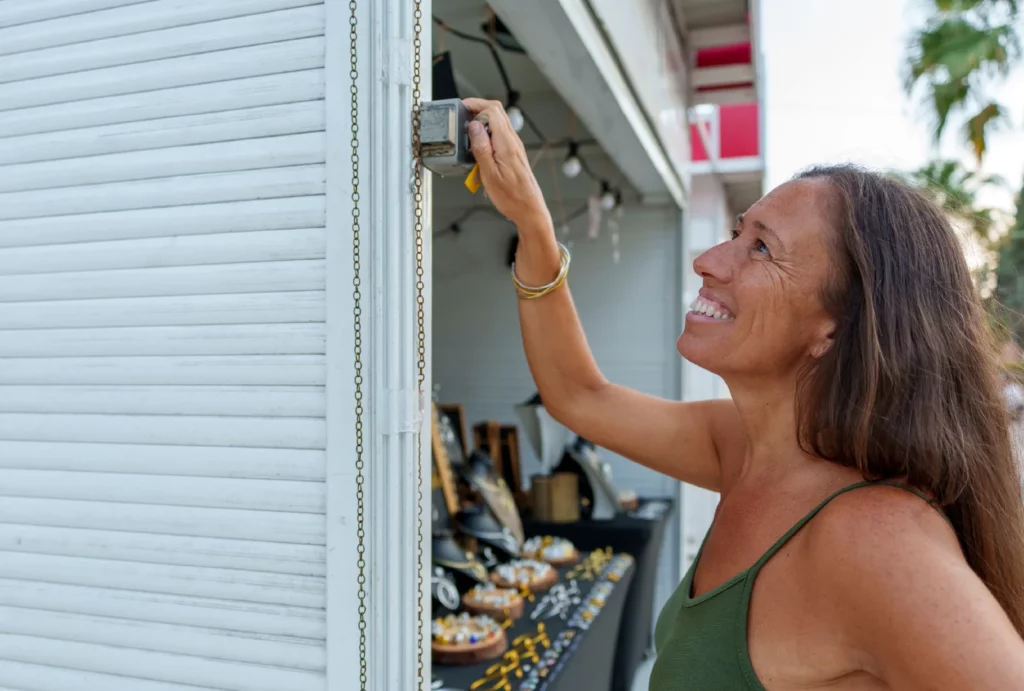
1. Protect Yourself with Vendor Insurance
Getting vendor insurance for fairs and festivals is an essential step for getting into events and protecting your business.
This crucial coverage safeguards you and the venue from paying for costly accidents. If a customer trips over your display or your booth falls onto another tent, your insurance is designed to cover medical expenses, legal fees, and repair costs, so you don’t have to.
Why You Need Insurance for Fairs and Festivals
Venues often ask for proof of insurance when you sign up, also known as a Certificate of Insurance (COI). Chances are, they’ll also ask you to add them to your policy as an additional insured, which protects them from damages caused by your business.
Need help meeting event insurance requirements? Check out our guide.
The best part? With ACT, you can add unlimited additional insureds to your policy for free! That’s like having an infinite stock of perfect-sized canvases or a lifetime supply of glaze for endless masterpieces.
Compare our ACT Pro and ACT Go policies to find the best insurance for your craft.
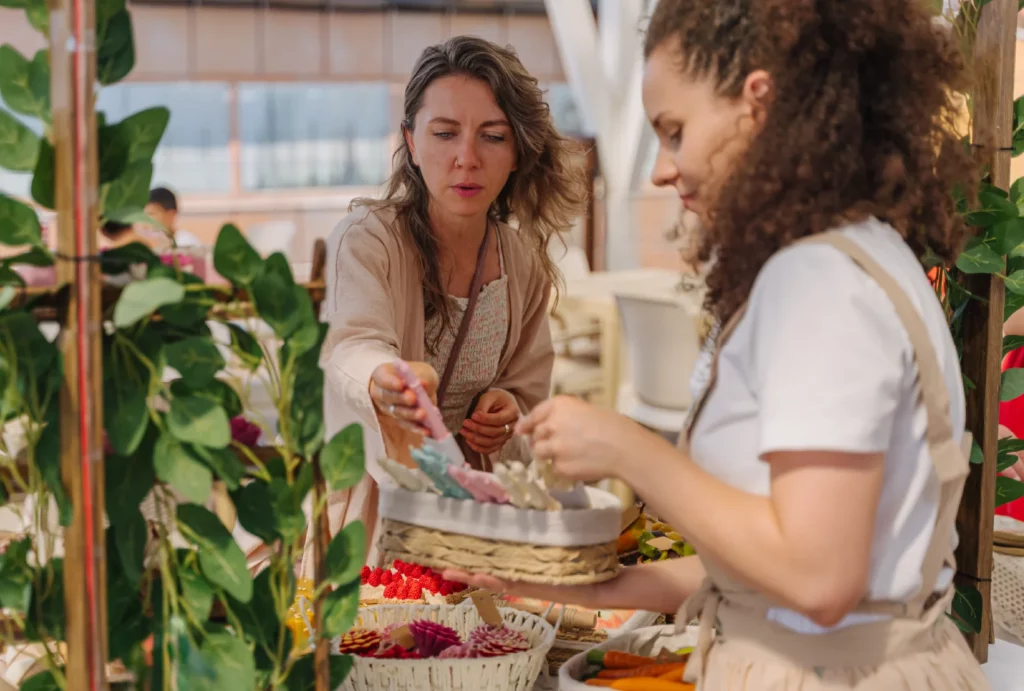
2. Follow Your Audience
For every show you plan to attend, ask yourself, “Does this event make sense for my target audience?” If the answer is yes or maybe, start applying! If the answer is a definite no, reconsider.
In other words, don’t attend events simply for the sake of attending. Instead, save your time and money planning for the shows that are more likely to generate sales.
Here’s one way to find the right festivals and shows for selling your craft:
- Go to our Top Arts & Crafts Events By State directory
- Scroll through your state’s list of events
- Choose a festival or show near you
- Click “Learn More” to visit their website
Research how big the event is, where it’s located (indoors/outdoors), the average attendance, and how much travel and fees would cost. This helps you set a budget for the event and determine the number of sales you need to come out on top.
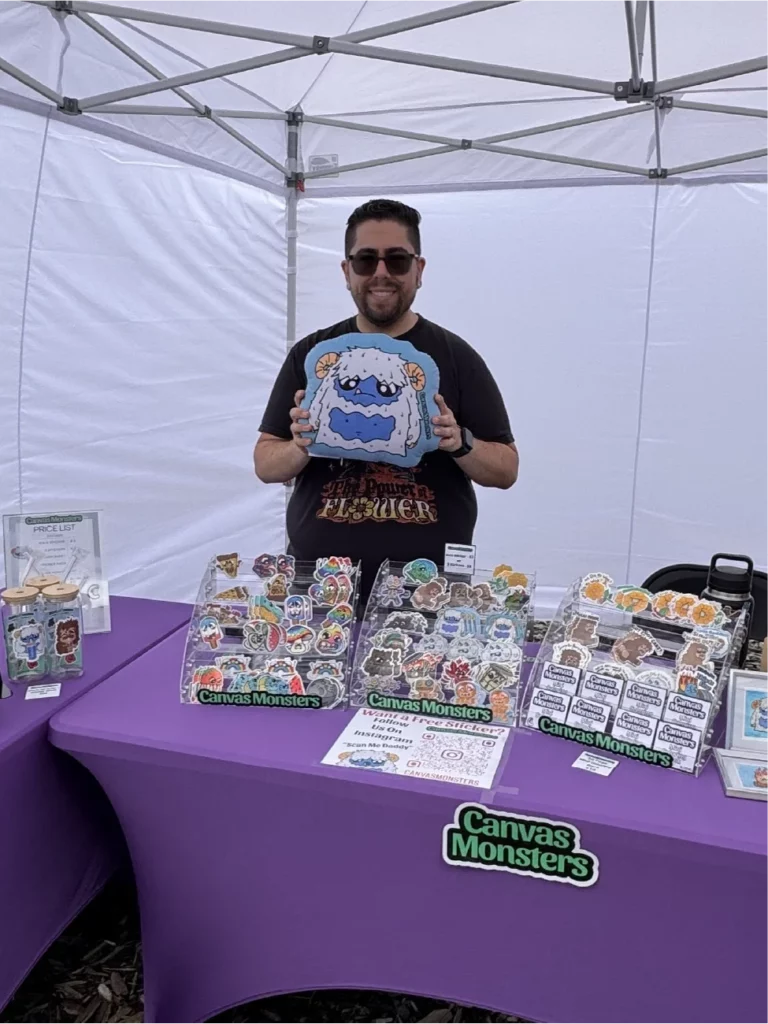
Expert Advice
Andria and Mike discovered several helpful tips during their first year as art vendors, including:
🔎Stock up and do your research.
“Research what markets you want to do at least six months in advance, so you know what your festival season will look like. Depending on how long it takes to make your products, start stocking up well in advance so you’re not scrambling at the last minute.”
✨Bonus Tip: “Bring a booth buddy! Being a solo business owner often means running a booth by yourself, but if you can bring a friend, setting up will be faster, and you can take bathroom breaks!”
Andria and Mike Ortiz
Owners at Canvas Monsters
3. Register Early to Secure Your Spot
Always register early for the events you know you want to attend. This ensures you make the application deadline, especially if the venue has additional requirements, like submitting photos of your products or booth.
Getting to know the venue ahead of time also gives you a strategic advantage. Work with the event organizer to find a map of the event and see if you can request a specific location for your booth. High traffic areas like corners or nearby food vendors naturally draw people in, boosting your sales potential.
Build Your Network
Once you’re approved, send the event organizer or venue a quick, friendly email to thank them for the opportunity and introduce yourself. At the event, get to know your fellow vendors and the event staff.
Building these relationships can lead to prime booth locations and invites to other events in the future. Remember, it’s not just about one season — it’s about building a sustainable business.
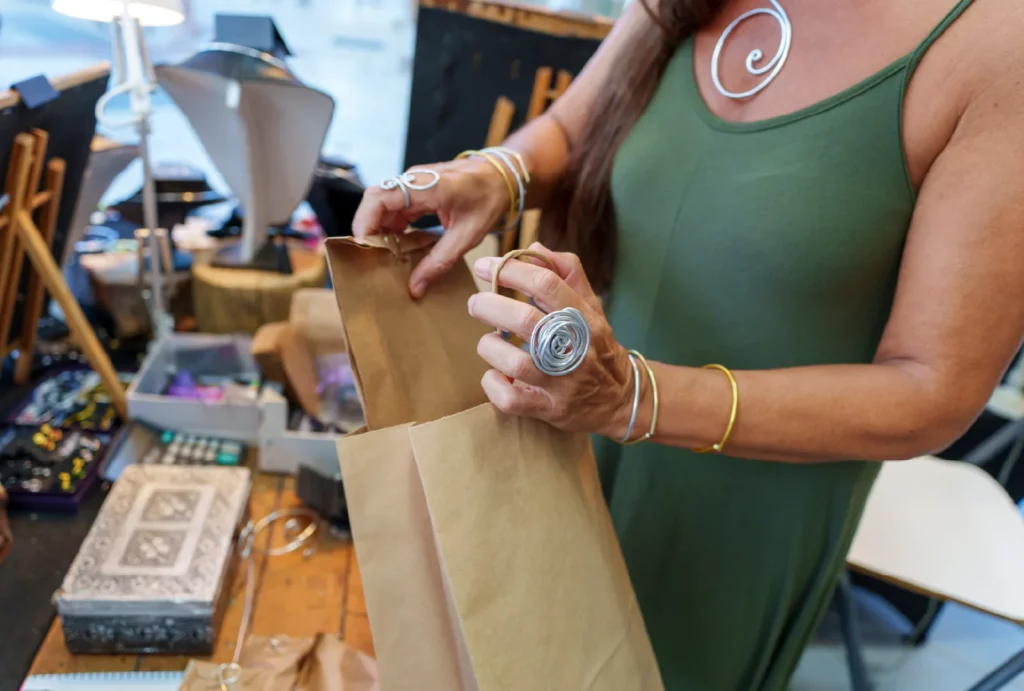
4. Prep Your Booth Like a Pro
Most venues give you about an hour to set up before festival goers arrive. Keep it stress-free by getting your booth ready before you even get to the venue.
First, do a practice run of your display in your backyard or living room. Make sure your tent, tables, and signage are all secure, steady, and in good shape. This helps safeguard your booth from unwanted accidents, like a sign falling or your tent collapsing mid-event.
Next, focus on your customer’s experience. Is your layout welcoming and easy to navigate? Can they easily see all your products and find the prices? A thoughtfully designed space looks more professional and makes engaging with customers feel effortless.
Quick Pre-Event Booth Prep Checklist
Before you load up the car, run through this list to ensure your space is safe, secure, and ready to impress:
- Is your tent free of rips, tears, or structural issues?
- Is your table steady and balanced?
- Are all tripping hazards secured?
- Are all your signs properly secured?
- Do you have a plan to repair your booth if needed?
- Do you have plenty of bags for packing purchases?
- Are your business cards on display?
- Are your prices easy for customers to see?
5. Get Your Paperwork in Order
Avoid last-minute stress by keeping your paperwork all in one place, like a folder or on your phone. That way, when event staff asks for proof of insurance before setting up, you can show them you’re covered.
The most common paperwork craft fair vendors need includes:
- Certificate of Insurance (COI): This document shows what your vendor insurance policy covers. You’ll also likely need to list the venue as an additional insured.
- Business license: Depending on where you live and sell your products, you might need a business license to operate legally
- Sales tax permit: Because it’s your responsibility to collect sales tax and pay it to your state, you’ll need to have your seller’s permit to legally collect those taxes
- Event-specific paperwork: Bring any specific permits the event requires, along with a copy of your signed vendor agreement and event rules and regulations to ensure you’re in compliance
By taking care of this paperwork ahead of time, you’re setting yourself up for a stress-free season and peace of mind!
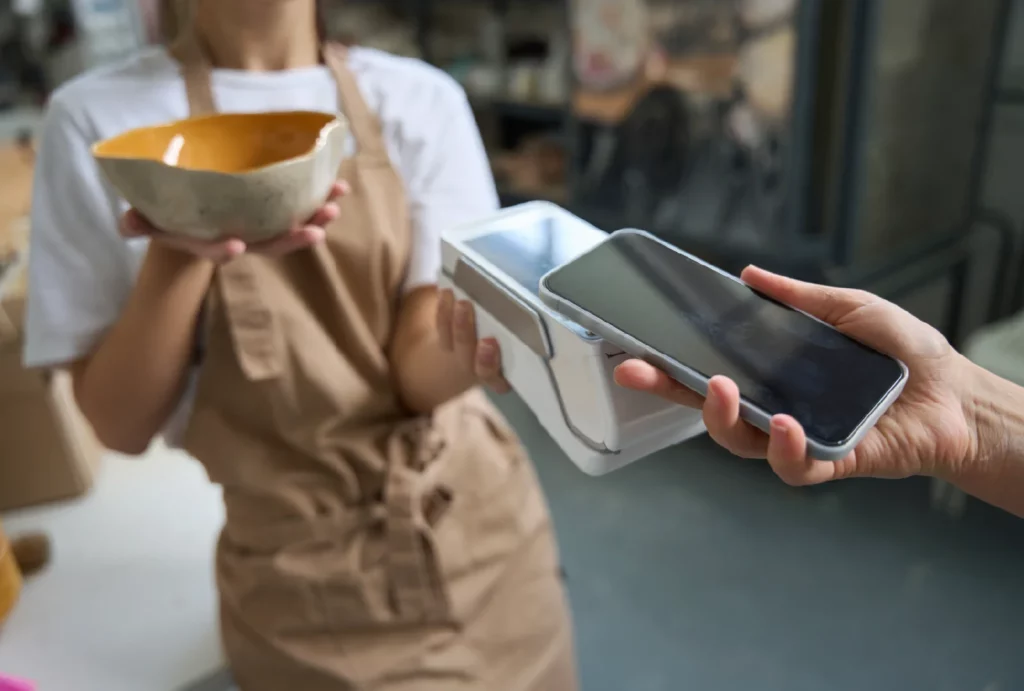
6. Manage Your Inventory & Money
Keeping track of how much stock you bring and what actually sells is key to a profitable season. By managing your inventory and money together, you stay organized and know exactly how your business is doing.
Know What Sells (And What Doesn’t)
- Prep with purpose: Before each show, analyze the total cost of your products, display, travel, and fees. Use this to estimate how much inventory you need to meet your sales goals.
- Track your stock: Use a spreadsheet or a simple notebook to keep a running tally of your items. If you make over 10 items, using product tags or SKU numbers can make tracking easier.
- Variety is key: Bring a variety of items at different price points so customers in every budget can fall in love with your products.
- Spot your bestsellers: After each event, take a moment to count what’s left. This helps you know which products are your biggest hits so you can bring more of them next time!
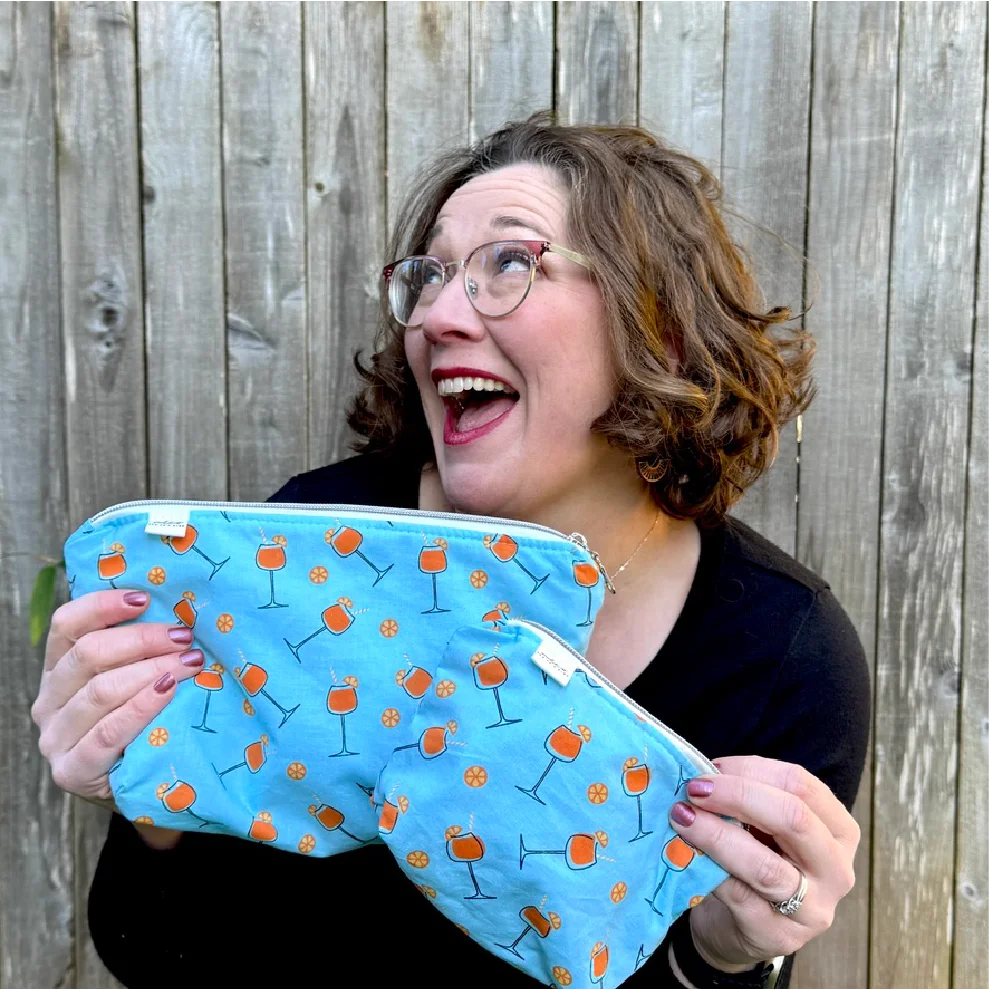
Expert Advice
Nancy is a regular vendor at craft fairs and farmers markets across western Washington. Her advice?
📈Build a market-tracking spreadsheet.
“I log everything: deadlines, booth fees, gross sales, attendance, and even notes on what worked (or didn’t). This helps me compare year-to-year and decide which markets are truly worth the time and investment.”
Nancy Owyang
Founder, Neco Bag LLC
Master Your Money
- Accept cash AND card: Give customers the option to pay their way using cash, card, and mobile payment systems like Square or PayPal — which make tracking sales tax a breeze.
- Have a backup plan: Nothing cuts a sale short like a dead battery or no Wi-Fi. Always ensure your devices are fully charged and consider a physical backup plan, like carrying portable battery charging devices
- Know your profit: Compare your total expenses to your final sales. This gives you a clear picture of your profit and helps you make smart decisions for the future.
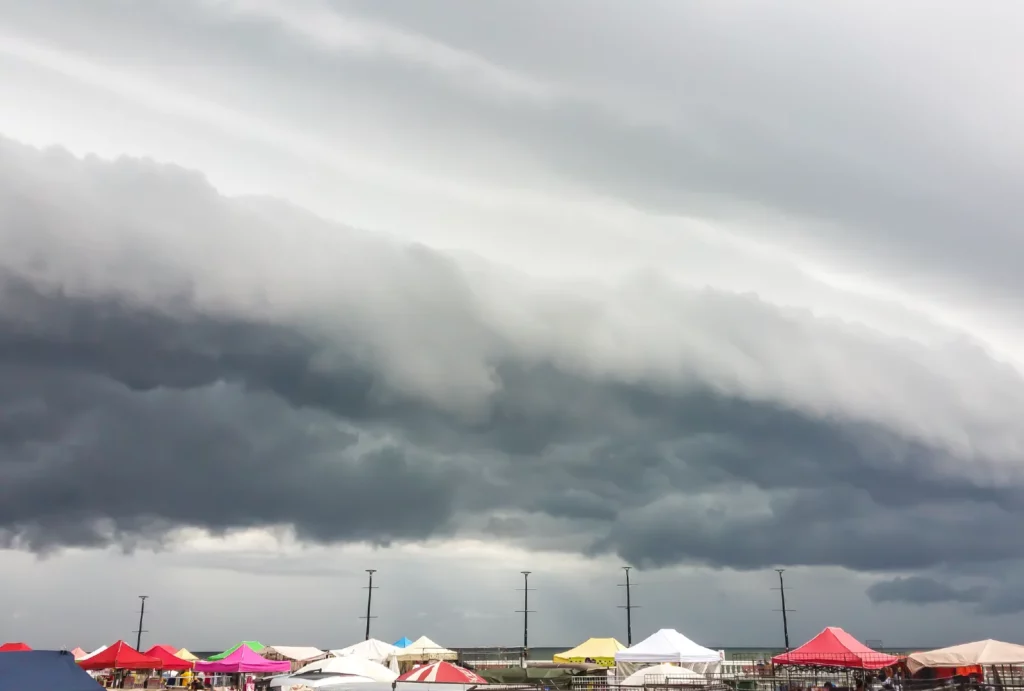
7. Expect the Unexpected
One of the most common claims we see at ACT is when a vendor’s booth blows over and either injures someone or damages someone’s property. Our fair and festival insurance is built to support you in these moments, covering the costs so you can focus on selling your pieces.
You can’t control the weather, but you can plan for it with these vendor safety tips:
- Anchor your booth: Always bring extra weights, tent stakes, or ropes to secure your tent and tables against wind
- Shield your work: Keep large plastic tarps and other covers easily accessible to quickly protect your creations from a sudden downpour
- Safety first: Carry a small first-aid kit and a fire extinguisher, especially if your craft involves heat sources like a kiln, soldering iron, or torch
- Handle accidents with care: If a fragile item breaks, have a plan and the right supplies (like a broom and dustpan) to safely clean up any sharp debris
- Know your surroundings: Take a moment to familiarize yourself with the venue’s layout, noting all emergency exits and first-aid stations
- Stay hydrated: Don’t forget to take care of yourself — bring plenty of water, especially in hot and humid conditions when you’re busy with customers
Even with the best planning, accidents can happen. With a solid plan and the right insurance coverage, you’ll be ready to sell your wares safely and enjoy a worry-free season!
FAQs About Vendor Insurance for Fairs and Festivals
What type of insurance do I need as a fair or festival vendor?
As a fair or festival vendor, you need general liability insurance, often called vendor insurance. A must-have for artists, crafters, and makers, this policy helps you meet event requirements while protecting your creative business from financial risks.
How do I get insurance for my first event?
Get event-approved coverage in minutes when you:
- Get a free quote with ACT
- Buy your policy online
- Instantly download your proof of insurance
Can I get short-term insurance for a one-time event or festival?
Yes, you can get short-term insurance for a one-time event or festival through ACT Go. This short-term policy covers you and your booth for 1–3 days, a week, or up to 90 days, making it the best insurance for craft shows and events lasting from a single day to an entire season.
What does event insurance cover for vendors?
Event insurance for vendors covers the costs of accidents that your business may cause at an event. This includes damages to third-party property and injuries to others.
Specifically, it can cover:
- Medical expenses if a customer or attendee gets hurt at your booth
- Legal fees and settlements if you are sued
- Repair or replacement costs if you accidentally damage the venue or another vendor’s property
Is vendor insurance required for participating in festivals or fairs?
Vendor insurance is required for most festivals and fairs. Many venues and event organizers will ask to see proof of your insurance before allowing you to set up your booth. With an ACT policy, you receive an instant Certificate of Insurance (COI) to help you easily meet these requirements.

